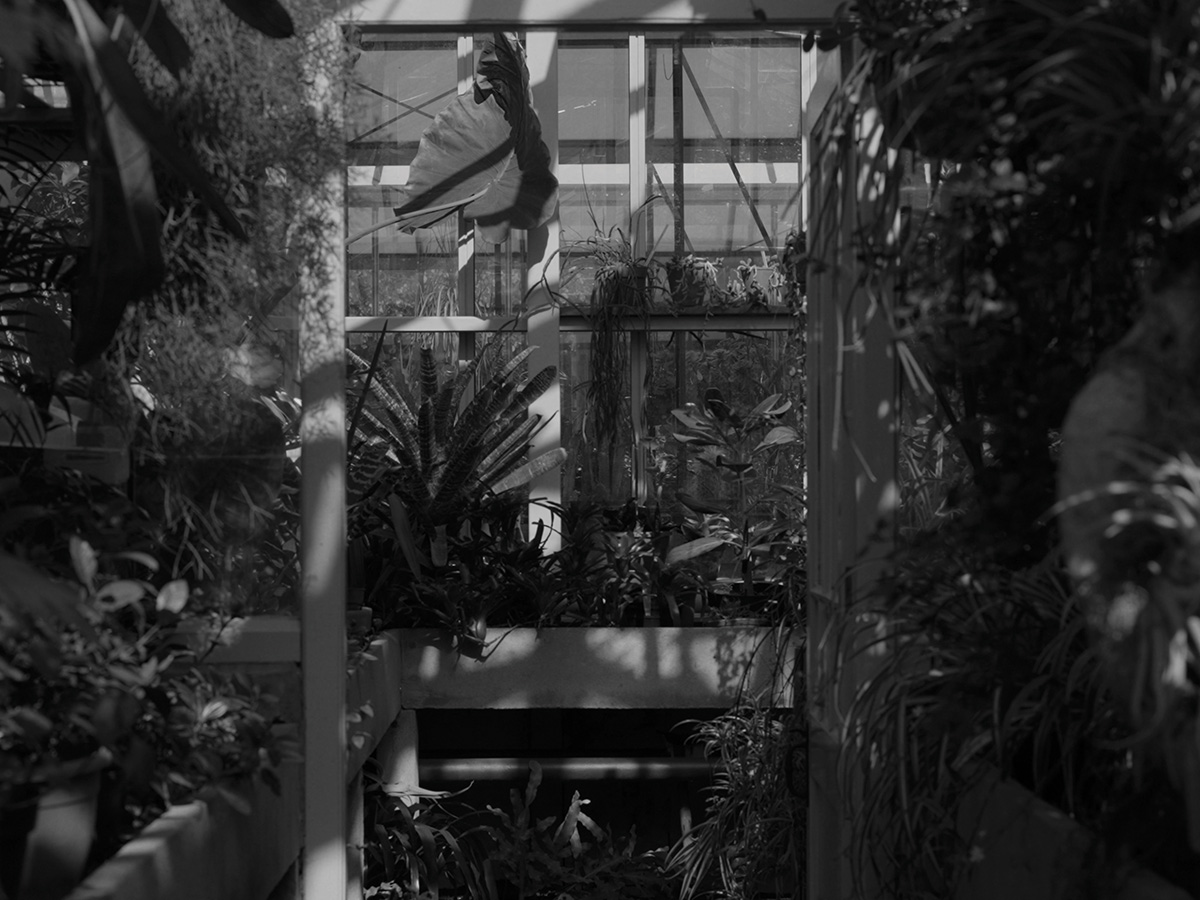Catalogue > Un extrait vidéo au hasard

Sol Archer
On a bare rock by the ocean you will never hear anything but birds whose cries blend with the sound of winds
Film expérimental | 4k | noir et blanc | 15:20 | Royaume-Uni, Pays-Bas | 2022
Brief Synopsis The tropical greenhouse is the pinnacle of the construction of nature as spectacle, a montage of discontinuous seasons, climates, and ecosystems, narrating ecological travelogues for the spectator passing through the hard cut of the glass door. Within, ‘nature’ is a collage inherited from the colonial period, an image practice, emergent contemporaneously with the nascent technologies of photography, and ultimately the bricolage strategy of cinema, and calling for specific relations of care and ecology building. In this film volunteers at a colonial era greenhouse in a small Dutch village collaborate to produce a sonic environment, soundtracking their maintenance labour with vocal re-creations of animal and bird calls, transcribed in the 1820s as western musical notation by Hercule Florence, the Brazilian ‘isolate inventor of photography’. Detailed synopsis This film is a work on the construction of ‘nature’ as image practice, emergent in the colonial period contemporaneously with the nascent technologies of photography, recording, and ultimately the bricolage strategy of cinema. Volunteers at a colonial era greenhouse in a small Dutch village soundtrack their labour maintaining a tropical spectacle with vocal re-creations of animal calls, transcribed in the 1820s in Brazil by Hercule Florence, the Brazilian ‘isolate inventor of photography’, whose writings pre-sage the spectacle and compression of space and time of cinematic form. The tropical greenhouse is the pinnacle of the construction of nature as spectacle, a montage of discontinuous seasons, climates, and ecosystems, narrating ecological travelogues for the spectator passing through the hard cut of the glass door. Within, ‘nature’ is a collage inherited from the colonial period, that has left us with composite ecologies, gardens, parks, and farms, montages of ecosystems and climates forming relations according to aesthetic, cultural, and commercial values and calling for specific relations of care. In the 1820s, while on the Langsdorff expedition into the interior of Brazil, Florence, employed to illustrate scientific and anthropological encounters, developed a new method for transcribing animal calls as European style musical notation. His fragments of sound were sent to the scientific institutes of the Metropole, but, the expedition ending in sickness, unrecognised. In the mid-1800s, with printing outlawed in Brazil, Florence developed a photographic process, and a rudimentary camera 15 years before Daguerre, with the aim of reproducing and publishing his work. Bound together in his writing, and in his sound and image practice ‘nature’ emerges in the 1830s as construct, as an image making spectacle, a quasi-cinematic re-assemblage of isolated elements into a sensory, and, above all aesthetic framework. “Gardens, like dreams, would seem to lose their innocence in analysis. However, dreams, like gardens, were never disconnected from the every day damage, responsibilities, and contaminations of the seemingly more “real” spaces of our lives. The dried plant specimen bound in the monograph with coloured plants may lead us from botany to rivalry and the problems of power and desire, but, in that path, the dream of the botanical monograph also shows us that the transports of pants and passionate attachments to flora hold in their train an inescapable history of the effects of imperium. Though we are implicated in the history of the dream of the botanical monograph, we cannot just disavow the botanical, claiming that it has no place, especially if we are to have a place at all in this global environment not necessarily of our own making. The problem then becomes how to re landscape the overdetermined “garden” we may most want to displace.” Jill H. Casid, Sowing Empore, Landscape and Colonisation.
Sol Archer (1983) is a Netherlands based artist working through collaboration with professional and non-professional groups, considering the encounter as a space of production. Frequently working with video, Sol is focussed on ways individuals and communities constitute themselves through their association with collective cultural activity, and how identities and histories entwine through the performance of cultural attachment. This extends into a pedagogical practice on structures and systematising group environments focussed on self reflexive film-making practices and the legacy of collaborative film practice. Sols work has been exhibited widely, including in the Sydney Biennial, Sydney, AU; Rozenstraat, Amsterdam, Golden Thread, Belfast, Northern Ireland, NL; Le Crac19, Montbeliard, FR; Index Foundation, Stockholm, SE; TULCA, Galway, IR; Le Lieu Unique, Nantes, FR; MuKHA, Antwerp, BE; and more.